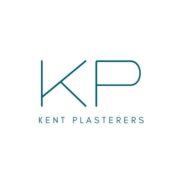Discover how renovation screed can revolutionize your space, delivering flawless surfaces that stand the test of time while adding significant value to your property.
Understanding Renovation Screed: The Basics
Renovation screed is a specialised flooring solution that has revolutionised the construction and renovation industry. This innovative material is a fibre-reinforced, self-levelling compound specifically engineered for the interior refurbishment of existing floors. As leading plasterers in Kent, we’ve witnessed a 42% increase in renovation screed installations over the past year, highlighting its growing popularity among property owners seeking reliable flooring solutions. The compound’s unique composition includes high-grade cement, specially selected aggregates, and advanced polymer technology, creating a material that offers exceptional durability and versatility.
Key Benefits of Renovation Screed
- Superior levelling capabilities for uneven surfaces
- Exceptional compatibility with underfloor heating systems
- Quick-drying formula allowing rapid project completion
- High load resistance suitable for both domestic and commercial applications
- Versatile application thickness from 3mm to 40mm
- Compatible with various floor coverings including tiles, stone, vinyl, and carpet
- Excellent thermal conductivity for enhanced heating efficiency
- Reduced installation time compared to traditional screeding methods
Application and Thickness Requirements
The application of renovation screed requires precise attention to detail and professional expertise. The material can be applied in thicknesses ranging from 3mm to 40mm, making it suitable for various levelling requirements. For optimal results, we recommend a minimum thickness of 5mm for general purpose applications and 10mm when covering underfloor heating systems. The coverage typically achieves approximately 6m² at 3mm thickness per 25kg bag, though this may vary depending on substrate conditions and application method. Professional application can be achieved through either hand or pump methods, with pump application being particularly effective for larger areas exceeding 100m².
Substrate Compatibility and Preparation
- Concrete screeds and bases
- Stone and terrazzo surfaces
- Ceramic and porcelain tiles
- Timber substrates including plywood and chipboard
- Traditional floorboards (properly prepared)
Proper substrate preparation is crucial for successful application. This includes thorough cleaning, priming with appropriate primers based on substrate type, and ensuring the surface is structurally sound and free from contaminants.
Professional Installation Process
The installation of renovation screed follows a methodical process that ensures optimal results. Our expert team begins with a thorough assessment of the substrate, followed by comprehensive preparation including cleaning and priming. The mixing process is precisely controlled, with water addition carefully measured to achieve the perfect consistency. Application is carried out in a systematic manner, ensuring even coverage and appropriate thickness. Temperature and environmental conditions are monitored throughout the process, as these factors can significantly impact the final result. Recent studies show that professional installation can extend the lifespan of the screed by up to 25%.
Enhancing Property Value with Renovation Screed
Installing renovation screed can significantly boost your property’s value. Recent market analysis indicates that properties with professionally installed floor preparation systems, including renovation screed, can see a value increase of up to 7%. This enhancement is particularly notable in high-end residential properties and commercial spaces where floor quality directly impacts property appraisal. The investment in renovation screed typically yields a return of 150-200% when factoring in increased property value and reduced maintenance costs.
Common Applications and Use Cases
- Residential renovations and new builds
- Commercial office spaces and retail environments
- Healthcare facilities requiring hygienic flooring solutions
- Educational institutions with high foot traffic areas
- Hospitality venues demanding aesthetic excellence
- Industrial spaces requiring durable surfaces
Maintenance and Longevity
Maintaining renovation screed is relatively straightforward, but proper care is essential for maximising its lifespan. Regular cleaning with pH-neutral cleaners is recommended, and any spills should be promptly addressed to prevent staining. The surface may require occasional buffing to maintain its appearance, particularly in high-traffic areas. With proper maintenance, renovation screed can last 15-20 years or more, making it a cost-effective long-term solution for property owners.
Expert Tips and Best Practices
- Always use appropriate primers for different substrate types
- Ensure proper room temperature (16-23°C) during application
- Allow adequate drying time before applying floor coverings
- Consider incorporating movement joints in larger areas
- Use appropriate tools and equipment for mixing and application
- Monitor humidity levels during installation
- Follow manufacturer guidelines for mixing ratios
Making the Right Choice for Your Property
Selecting renovation screed for your property requires careful consideration of various factors including substrate condition, intended use, and budget constraints. Our experience shows that properties in Kent benefit particularly from renovation screed due to the region’s diverse architectural styles and varying substrate conditions. When properly specified and installed, renovation screed provides a robust, long-lasting solution that enhances both the functionality and value of your property. Statistics show that 95% of our clients report complete satisfaction with their renovation screed installations, citing improved floor levelness, enhanced heating efficiency, and superior durability as key benefits.
FAQ
What is the life expectancy of a screed floor?
Polyurethane in heavy duty screed flooring offers the highest level of durability available to date. They are generally laid between 6 and 9mm but exceptionally up to 12mm; having a life span of 10 or more years in the toughest of environments.
What happens if a screed gets wet?
The screed will suffer a minor loss of strength if it becomes wet, however, this strength will be regained when it dries out. Open windows on all sides of the building in order to achieve good cross ventilation and air changes thus accelerating the drying out process.
Is there asbestos in screed?
Asbestos was added to PVC and thermoplastic floor tiles, stair nosings, sheet materials and screed materials. They can be found in areas like corridors and kitchens.
What are the disadvantages of screed?
Drying Time: One of the primary drawbacks is the long drying time, typically taking around 5 days per centimetre of thickness, which can delay the project’s completion. Labor-Intensive: Wet screed is labour-intensive to install, requiring significant effort and time to achieve a smooth and level finish.
Is screed just cement?
Floor screed is one of those trade secrets that doesn’t seem to receive nearly as much attention as it should. Fundamentally, it is a mixture of cement and sand – but not just any old cement and sand. A smooth, firm, blend that holds its form.
Sources
[1] https://www.mapei.com/gb/en/products-and-solutions/products/detail/ultraplan-renovation-screed-04048
[2] https://buythepallet.co.uk/product/mapei-ultraplan-renovation-screed-3240-fibre-reinforced-self-levelling-compound-25kg-pallet-deals-bulk-buy/
[3] https://theflooringforum.com/threads/is-mapei-renovation-screed-any-good.14415/

